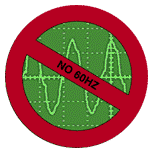
Basic Lab Report Writing Tips
Always number your pages.
Title: Should give an accurate but fairly terse representation of the topic and results of the experiment
Abstract: Include brief summary of results and conclusions.
Introduction: Always include a purpose statement that's clear and concise.
Materials and Methods: a primary goal should be to enable any intelligent person in a lab to duplicate your results. Think of all the parameters that went into establishing your results, and include those. For example, for the EOD lab, the strength of the EOD will vary with the size of animal, so you should include animal size. Water conditions are extremely important (these fish are used as water quality sensors), and has a large affect on EOD rate, so it is important to include water conditions (pH, temperature, conductivity, water bath solution formula). Equipment make and model is of course very important. The recording mode of the amplifier used is important, and in some instances the filter settings should be stated (generally these are not, it being assumed that a competent scientist will not distort the signal in a way that will affect the results: however, in our protocols we sometimes intentionally distort the signal, lengthening it so as to avoid aliasing with the maximum 1K continuous sampling rate of the the MacLabs---in this case the settings should be noted). The stimulation protocol is highly important, and parameters such as length of stimulus, inter trial intervals (can be particularly important since many neurons exhibit phasic responses and need time to recover) must be noted. Any analysis performed on the data must be detailed carefully, although assumptions and problems are best saved for the discussion. The correct settings for the spike discriminator also fall under "competence of the scientist" and would generally not be noted; however the bin size used for histograms of the data are highly important and must be noted.
What to Exclude from Materials and Methods: some things are so standard that you needn't include them---in fact, the need for brevity compels their exclusion. Many mundane aspects of an experiment, such as connecting instruments with the proper cabling and termination, is excluded under the "competence of the scientist" clause noted above. For example,while it is proper to state:
The output of the function generator (B&K8200) was sent to the audio monitor (Radio Shack AK221) and oscilloscope (Tektronix 3115) (though note that the presence of these "convenience" signal monitors are not usually included in published papers, unless their output has bearing on the results section).
it would be tedious and unnecessary to state (as some lab reports have):
The output of the function generator (B&K 8200) was connected to a 3' BNC (Gelco RG58) to a BNC 'T' adapter (American 23A). One side of the 'T' was connected to a dual trace analog storage oscilloscope (Tektronix 3115), the other side of the 'T' was connected to another 3' BNC (Gelco RG 58) to another 'T', one side of which went to a 50 ohm terminator (RTE 44), and the other to an audio monitor (Radio Shack AK221).
One could argue that these other variables could affect the results you found, and so should be included, but then you could also argue that the humidity, room temperature, air pressure, and the intensity of cosmic rays ad absurdum could affect your results, and these are not included (although room temperature often is for experiments where the activity of the chemicals/cells is highly affected by this parameter, e.g. proteases). You have to use your best judgment in combination with conventional practice as exemplified by the method sections of your contemporaries in peer reviewed neuroscience/physiology journals.
DO NOT regurgitate the experimental protocol handed out for the lab in this section. These instructions are not structured as a proper methods section is.
Results: Just the facts ma'am---don't include any interpretation of your results, save that for the discussion. Also, don't make the mistake of taking a "shotgun" approach and drowning the section with graph after graph. The informative value of the tables and figures is inversely proportional to the number of them you include---be terse and concise, and put some thought into the best way of analyzing/summarizing/reducing all the data to communicate whatever it is you are trying to show. Give table column headings informative titles rather than arbitrary symbols. Make sure you correctly label the axis and specify the units in graphs! When giving results that are amplified, correct for the amplification. Choose appropriate scaling for the graph to make it readable; you should use consistent graph scaling if you are going to compare graphs in your discussion.
A results section does not consist of a simple listing of figures and tables showing your data; you need to summarize your results in English, without any attempt to explain them and with minimal if any interpretation---save these aspects for the discussion.
Discussion: All the technical problems in the collection and analysis of the data that may impact your result should be noted here, even if they are not manifest (especially if they are not manifest!) in the results section. Of course, the main part is to discuss what you found, and why you found what you found. References to primary literature relevant to your report are a significant bonus.
M. MacIver & J. Kramer, March 1997
LAST UPDATED APRIL 4 1997
